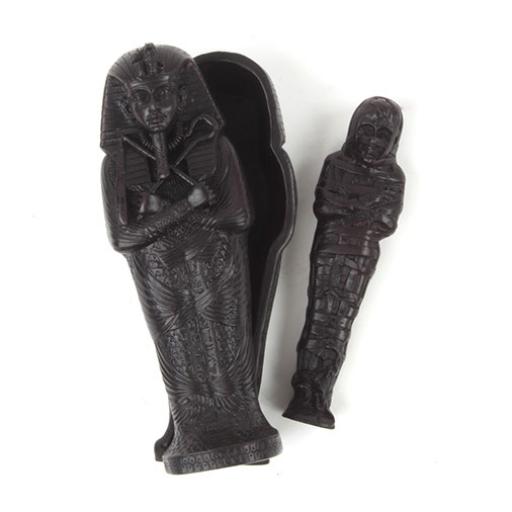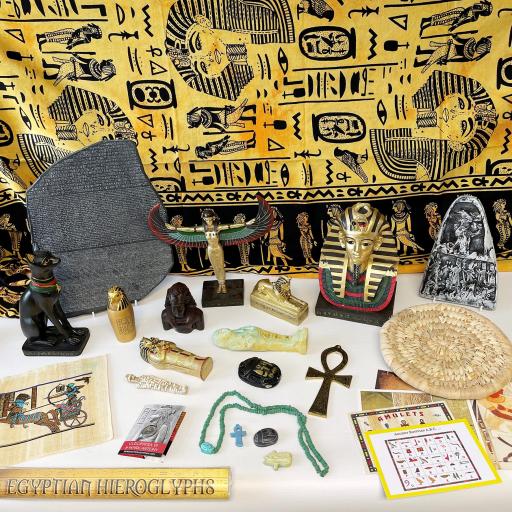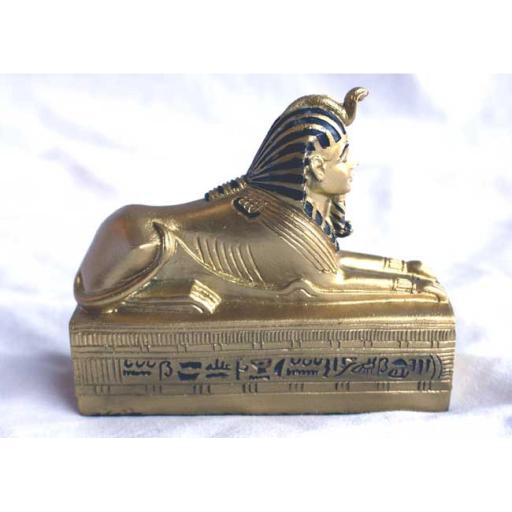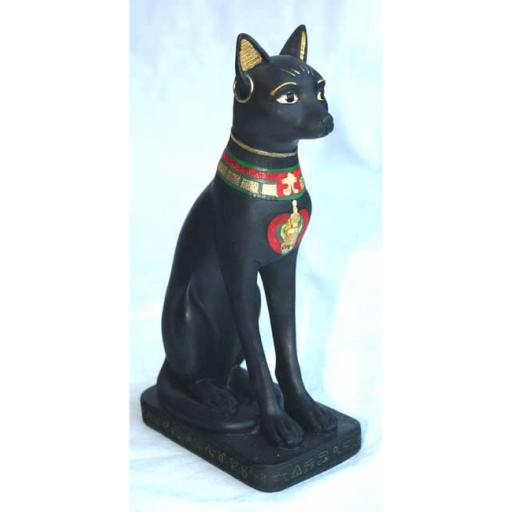What were the main purposes of the temples & tombs of Ancient Egypt?
Temples and tombs in Ancient Egypt were strong structures, that were kept in place due to their stone construction. Palaces and domestic buildings were at greater risk as mudbrick constructions. Temples were mansions of living gods; what should always be kept in mind, was the function of the tomb, for the ancients it was not about death, but the extension of life.
The temple structure was intended as a microcosm of the world. The roof contained celestial references , the walls awash with vegetation and animal life, supporting columns topped with papyrus clusters and lotus buds. Not that everyone would be allowed to view all of this. Massive pylons outside the courtyards acted as barriers to the rank and file of society , and as defensive barriers in case of attack, which could arrive by land or river. On the very outside of the walls, you would expect to see pharaohs engaged in battle scenes. Outside the pylon walls, especially in the major temple complexes, there could be a stone OBELISK, thought of as a monument to the Sun God. The enormous structures were often mined and fashioned in Aswan (a city on the river Nile), then transported via rivercraft onto site. Bearing inscriptions and names of kings, such undertakings demonstrated the high esteem particular gods were held in by prominent (and wealthy) pharaohs. They would originally have been topped with gold and silver alloy pyramid (electrum) which would have scattered the sun’s rays. A feat of human endeavour and engineering, claimed for the pharaoh, or reclaimed for the following monarch. Two of these stood at the entrance to the Luxor temple, and are ascribed to pharaoh Rameses II.
There can hardly be another temple in Egypt that impresses more than the Complex temple at Karnak. Some parts date from before 2500BC, but comprise of merely foundations or stumps and boulders. Many of the most recognized of pharaohs (of today regarding our collective knowledge) are represented here, some when they were in their prime and well able to fund the vast building programs. Others appear to have thrown up courts and halls which collapsed as quickly , or were unable to finish what they had started.
Shrines to various gods indicate their ranking in different periods, all adding to the cultural and political testament of one of the giants of the ancient world. Serving as a religious capital as a centre of intellectual excellence, the priesthood learned writing, maths, astronomy, chemistry, metallurgy, graphic arts, even the interpretation of dreams. Music schools, legal and medieval colleges added to the city in itself. Workers, cooks, butchers, brewers, bakers, builders, sculptures, painters, craftsmen and cleaners were under the direct control of the temple. Of course, the role of the priesthood was primarily of servitude to the gods; they communicated gods’ messages to the world outside. Their rituals were performed behind massive stone walls, away from the public gaze and presence. Also cementing his relationship with the gods was the pharaoh, who could sometimes come into conflict of interests and purpose as to the true ear of the god pertaining to the priesthood. The sacred man-made lake within the complex was used by the priests for bathing regularly before attending to their duties, dressed in the finest linens. They were required to shave head and body daily, eat prescribed foods and see that they met with the approval of the high priest who had been appointed by the king. A nilometer checked the height and flow of the Nile into the lake; it was even the home to a flock of geese, sacred to Amun, that were let in through a gate on the enclosure walls each morning.
Religious building would have proceeded throughout all eras, none in such earnest as the excavation and formation of tombs. Regular electricity cuts in modern Luxor emphasise what conditions ancient craftsman would need to overcome to achieve their masters goals. Without light, work underground remains impossible. Ancient oil lamps have been discovered in widespread archaeological sites, not only in Egypt. Surface shape and decoration, however, serve to differentiate others from this cultural heritage. The Hathor headed lamp serves as a reminder of the roles of the goddess played, especially in terms of darkness and light. Primarily associated with beauty, love, dance and singing. She also gave sufferance to souls making their way through the underworld. As she brought the deceased from dark to light with the setting then rising of the sun, she could be expected to sustain the illumination for the carriers of the lamps.
Given the staggering craftsmanship and beauty found in many tombs, provision of light cannot have been haphazard or ill considered. One of the most exquisite collection of wall decorations can be found in the tomb of Ramose in Western Thebes, across the Nile in modern Luxor. Part of the tomb chapel has carvings and paintings of the pharaoh, the nobles’ family and his funeral in a “traditional style”, but two opposite wall frames turn into the most shocking representations of Akhenaten, (pharaoh) his wife Nefertiti and family as older pot-bellied, spindly legged oddities. Even Ramose is converted to such a stylish makeover, which has been interpreted as political conformism, in that it is present during the pharaohs reign and disappearing after his death. The so-called “Amarnan Style” marked the move from polytheism (the traditional worship of many gods) to monotheism and the worship of one god only; The Aten. The rays from this sun-disk dropped life giving ankh symbols onto the royal family, documenting one of the most radical departures in religious belief across all ancient Egyptian eras. Akhenaten, the newly constructed capital city (around modern day Amarna) appears to have been abandoned after c30 years, when the Kings’ brother/son? Tutankhamun (born Tutankhaten) took the throne. He retuned to the previous state order , and embraced the powerful control of the Amun priesthood for his very short reign. Ramoses’ tomb is essentially unfinished, with burial shafts and dugouts left empty. His documented death appears to have coincided with the date of accession to the throne of Tutankhamun.
At the age of 18, Tutankhamun lost his life; to this time there is no consensus as to how. Even though we have his body and a multitude of tomb contents, it is impossible to make generalisations without references to the context in which it came into being. That said, some funeral furniture makes for almost immediate recognition due to a conformity in its design. Canopic Jars contained the essential organs, separated from the deceased before the mummification process. He would need these, his corpse and facial likeness to be recognized and ready to pass onto the Afterlife; Many rituals and processes were based on moving onward in physical terms. Each jar was sealed with a lid depicting one of the few gods responsible for the contents protection. A jackal protected the stomach, ape the lungs, human for the liver, and the falcon the intestines. The heart was left in the body to be weighed against a feather on the scales of judgement in the underworld, hopefully light and virtuous enough to pass without reprisals (being eaten by Ammit, the crocodile headed monster, waiting beneath the scales).
Thoth, the Ibis headed god of scribes and wisdom recorded the names and outcome of the judgement process. He could also take the form of a baboon, shown in tomb paintings, such as that of Tutankhamun. Perhaps linked to the shrieks of baboons just before dawn, they came also to symbolize the rebirth of the deceased. Funerary texts on papyri, coffins shrouds and wall paintings, along with magical amulets would help to make sure that no harm came to the Pharoah, noble, craftsman, even God! The ancients saw their gods as being governed by the same natural laws as mankind.
The Giza Plateau is the home to the most famous icons of ancient Egypt: The pyramids and Sphinx. As they have been subjected to damage and deconstruction, they do not have the appearances of when they were originally built. The three main pyramids have been extensively excavated and researched, but as no specific human remains have been found, their functions as tombs still rests on conjecture. The entire area is honeycombed with ancillary chapels, tombs, temples and causeways, some linking the land with the river, especially at ancient flooding of the Nile. A fill size cedar boat was excavated, with parts of the vessel shown to have been immersed for some time up to the waterline. It is known as cheops’ boat (builder of the “great pyramid”) but canals were dug around the area to access the plateau harbours just below each pyramid site, so suggesting that it was once in ordinary use during his lifetime, or built for conveying his remains during the funeral from his residence at Memphis to his pyramid of temple at Giza. Such dilemmas can be found everywhere, especially when examining evidence from early Dynastic times. We need to be careful not to make hard and fast deliberations; history should be examined, questioned and enjoyed!
Evidence from the rocks hewn into building blocks for the pyramid construction show that they come from the pyramid plateau itself. Even the Sphinx can be seen as stratified limestone bluff, which has been weathered, fired at, suffered from water damage, and covered in sands of dereliction over its thousands of years. Although the adjacent pyramids were faced with better quality limestone, quarried from the Mokattam hills on the eastern side of the Nile, it does not appear to have been integral to the Sphinx. No definitive cartouches or identifying marks set out the builder of the Sphynx, at least on the body. Not that inscriptions always tell the full story: We know that many pharaohs defaced previous rulers’ works in order to claim them for their own. Reading the so-called “dream stela” between the paws of the Sphinx, we find inscriptions from Pharoah Tuthmosis IV, who recorded that he had been promised the throne of Egypt if he cleared away the sands around this massive desert edifice. There had probably been at least 1000 years between its construction and Tuthmosis’ clearance. By linking himself to this “Horus in the Horizon”, as the Sphinx was called, Tuthmosis emphasized his right to reign even though he was not the actual heir to the throne. With or without the backing of the Sphinx, he managed to rule, if only for 10 years. Perhaps we ought to view any inscriptions, especially Cartouches with caution.
Temples and tombs in Ancient Egypt were strong structures, that were kept in place due to their stone construction. Palaces and domestic buildings were at greater risk as mudbrick constructions. Temples were mansions of living gods; what should always be kept in mind, was the function of the tomb, for the ancients it was not about death, but the extension of life.
The temple structure was intended as a microcosm of the world. The roof contained celestial references , the walls awash with vegetation and animal life, supporting columns topped with papyrus clusters and lotus buds. Not that everyone would be allowed to view all of this. Massive pylons outside the courtyards acted as barriers to the rank and file of society , and as defensive barriers in case of attack, which could arrive by land or river. On the very outside of the walls, you would expect to see pharaohs engaged in battle scenes. Outside the pylon walls, especially in the major temple complexes, there could be a stone OBELISK, thought of as a monument to the Sun God. The enormous structures were often mined and fashioned in Aswan (a city on the river Nile), then transported via rivercraft onto site. Bearing inscriptions and names of kings, such undertakings demonstrated the high esteem particular gods were held in by prominent (and wealthy) pharaohs. They would originally have been topped with gold and silver alloy pyramid (electrum) which would have scattered the sun’s rays. A feat of human endeavour and engineering, claimed for the pharaoh, or reclaimed for the following monarch. Two of these stood at the entrance to the Luxor temple, and are ascribed to pharaoh Rameses II.
There can hardly be another temple in Egypt that impresses more than the Complex temple at Karnak. Some parts date from before 2500BC, but comprise of merely foundations or stumps and boulders. Many of the most recognized of pharaohs (of today regarding our collective knowledge) are represented here, some when they were in their prime and well able to fund the vast building programs. Others appear to have thrown up courts and halls which collapsed as quickly , or were unable to finish what they had started.
Shrines to various gods indicate their ranking in different periods, all adding to the cultural and political testament of one of the giants of the ancient world. Serving as a religious capital as a centre of intellectual excellence, the priesthood learned writing, maths, astronomy, chemistry, metallurgy, graphic arts, even the interpretation of dreams. Music schools, legal and medieval colleges added to the city in itself. Workers, cooks, butchers, brewers, bakers, builders, sculptures, painters, craftsmen and cleaners were under the direct control of the temple. Of course, the role of the priesthood was primarily of servitude to the gods; they communicated gods’ messages to the world outside. Their rituals were performed behind massive stone walls, away from the public gaze and presence. Also cementing his relationship with the gods was the pharaoh, who could sometimes come into conflict of interests and purpose as to the true ear of the god pertaining to the priesthood. The sacred man-made lake within the complex was used by the priests for bathing regularly before attending to their duties, dressed in the finest linens. They were required to shave head and body daily, eat prescribed foods and see that they met with the approval of the high priest who had been appointed by the king. A nilometer checked the height and flow of the Nile into the lake; it was even the home to a flock of geese, sacred to Amun, that were let in through a gate on the enclosure walls each morning.
Religious building would have proceeded throughout all eras, none in such earnest as the excavation and formation of tombs. Regular electricity cuts in modern Luxor emphasise what conditions ancient craftsman would need to overcome to achieve their masters goals. Without light, work underground remains impossible. Ancient oil lamps have been discovered in widespread archaeological sites, not only in Egypt. Surface shape and decoration, however, serve to differentiate others from this cultural heritage. The Hathor headed lamp serves as a reminder of the roles of the goddess played, especially in terms of darkness and light. Primarily associated with beauty, love, dance and singing. She also gave sufferance to souls making their way through the underworld. As she brought the deceased from dark to light with the setting then rising of the sun, she could be expected to sustain the illumination for the carriers of the lamps.
Given the staggering craftsmanship and beauty found in many tombs, provision of light cannot have been haphazard or ill considered. One of the most exquisite collection of wall decorations can be found in the tomb of Ramose in Western Thebes, across the Nile in modern Luxor. Part of the tomb chapel has carvings and paintings of the pharaoh, the nobles’ family and his funeral in a “traditional style”, but two opposite wall frames turn into the most shocking representations of Akhenaten, (pharaoh) his wife Nefertiti and family as older pot-bellied, spindly legged oddities. Even Ramose is converted to such a stylish makeover, which has been interpreted as political conformism, in that it is present during the pharaohs reign and disappearing after his death. The so-called “Amarnan Style” marked the move from polytheism (the traditional worship of many gods) to monotheism and the worship of one god only; The Aten. The rays from this sun-disk dropped life giving ankh symbols onto the royal family, documenting one of the most radical departures in religious belief across all ancient Egyptian eras. Akhenaten, the newly constructed capital city (around modern day Amarna) appears to have been abandoned after c30 years, when the Kings’ brother/son? Tutankhamun (born Tutankhaten) took the throne. He retuned to the previous state order , and embraced the powerful control of the Amun priesthood for his very short reign. Ramoses’ tomb is essentially unfinished, with burial shafts and dugouts left empty. His documented death appears to have coincided with the date of accession to the throne of Tutankhamun.
At the age of 18, Tutankhamun lost his life; to this time there is no consensus as to how. Even though we have his body and a multitude of tomb contents, it is impossible to make generalisations without references to the context in which it came into being. That said, some funeral furniture makes for almost immediate recognition due to a conformity in its design. Canopic Jars contained the essential organs, separated from the deceased before the mummification process. He would need these, his corpse and facial likeness to be recognized and ready to pass onto the Afterlife; Many rituals and processes were based on moving onward in physical terms. Each jar was sealed with a lid depicting one of the few gods responsible for the contents protection. A jackal protected the stomach, ape the lungs, human for the liver, and the falcon the intestines. The heart was left in the body to be weighed against a feather on the scales of judgement in the underworld, hopefully light and virtuous enough to pass without reprisals (being eaten by Ammit, the crocodile headed monster, waiting beneath the scales).
Thoth, the Ibis headed god of scribes and wisdom recorded the names and outcome of the judgement process. He could also take the form of a baboon, shown in tomb paintings, such as that of Tutankhamun. Perhaps linked to the shrieks of baboons just before dawn, they came also to symbolize the rebirth of the deceased. Funerary texts on papyri, coffins shrouds and wall paintings, along with magical amulets would help to make sure that no harm came to the Pharoah, noble, craftsman, even God! The ancients saw their gods as being governed by the same natural laws as mankind.
The Giza Plateau is the home to the most famous icons of ancient Egypt: The pyramids and Sphinx. As they have been subjected to damage and deconstruction, they do not have the appearances of when they were originally built. The three main pyramids have been extensively excavated and researched, but as no specific human remains have been found, their functions as tombs still rests on conjecture. The entire area is honeycombed with ancillary chapels, tombs, temples and causeways, some linking the land with the river, especially at ancient flooding of the Nile. A fill size cedar boat was excavated, with parts of the vessel shown to have been immersed for some time up to the waterline. It is known as cheops’ boat (builder of the “great pyramid”) but canals were dug around the area to access the plateau harbours just below each pyramid site, so suggesting that it was once in ordinary use during his lifetime, or built for conveying his remains during the funeral from his residence at Memphis to his pyramid of temple at Giza. Such dilemmas can be found everywhere, especially when examining evidence from early Dynastic times. We need to be careful not to make hard and fast deliberations; history should be examined, questioned and enjoyed!
Evidence from the rocks hewn into building blocks for the pyramid construction show that they come from the pyramid plateau itself. Even the Sphinx can be seen as stratified limestone bluff, which has been weathered, fired at, suffered from water damage, and covered in sands of dereliction over its thousands of years. Although the adjacent pyramids were faced with better quality limestone, quarried from the Mokattam hills on the eastern side of the Nile, it does not appear to have been integral to the Sphinx. No definitive cartouches or identifying marks set out the builder of the Sphynx, at least on the body. Not that inscriptions always tell the full story: We know that many pharaohs defaced previous rulers’ works in order to claim them for their own. Reading the so-called “dream stela” between the paws of the Sphinx, we find inscriptions from Pharoah Tuthmosis IV, who recorded that he had been promised the throne of Egypt if he cleared away the sands around this massive desert edifice. There had probably been at least 1000 years between its construction and Tuthmosis’ clearance. By linking himself to this “Horus in the Horizon”, as the Sphinx was called, Tuthmosis emphasized his right to reign even though he was not the actual heir to the throne. With or without the backing of the Sphinx, he managed to rule, if only for 10 years. Perhaps we ought to view any inscriptions, especially Cartouches with caution.


















